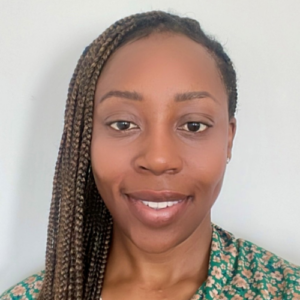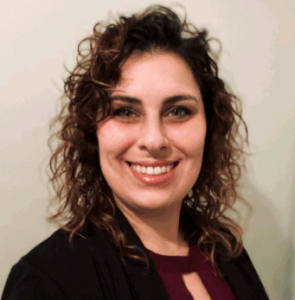EVIDENCE
Family Connects is an evidence-based model designed to support all families with newborns. Originally known as Durham Connects, the model was evaluated through two randomized controlled trials in Durham, NC. Our commitment to high-quality research continues, ensuring data-driven improvements to the Family Connects model.
A randomized controlled trial of Family Connects began in 2009, with findings from the 2009 and 2014 studies revealing significant benefits:
Healthier Starts for Babies
50% fewer emergency room visits and overnight hospital stays in the first year
More Confident and Calmer Mothers
30% lower likelihood of postpartum depression or anxiety
Stronger Child-Parent/Caregiver Bonds
Increased hugging, comforting, and reading, leading to greater responsiveness to infants’ needs
Safer, More Nurturing Home Environments
Families implemented simple changes to enhance safety, stimulation, and care for their babies
Better-connected Families and Thriving Communities
Families discovered more local resources and support, with a 15% increase in community resource engagement
Improved Postpartum Care
More mothers attended their 6-week postpartum health check
Our ongoing research continues to demonstrate the positive impact of Family Connects, strengthening families and communities alike.
The Evidence That Drives Us
Results from research on the Family Connects model have been published in a number of journals, including Pediatrics, American Journal of Public Health, and JAMA Network Open. Click through the years below to see how the evidence continues to grow.
Family risk as a predictor of initial engagement and follow-through in a universal nurse home visiting program to prevent child maltreatment (2013)
“Findings suggest that while higher demographic risk increases families’ initial engagement, it might also inhibit their follow-through. Additionally, parents of medically at-risk infants may be particularly difficult to engage in universal home visiting interventions. Implications for recruitment strategies of home visiting programs are discussed.”
Alonso-Marsden S, Dodge KA, O’Donnell KJ, Murphy RA, Sato JM, Christopoulos C. Family risk as a predictor of initial engagement and follow-through in a universal nurse home visiting program to prevent child maltreatment. Child Abuse Negl. 2013 Aug;37(8):555-65. doi: 10.1016/j.chiabu.2013.03.012. Epub 2013 May 6. PMID: 23660409; PMCID: PMC3760480.
Randomized Controlled Trial of Universal Postnatal Nurse Home Visiting: Impact on Emergency Care (2013)
“After demographic factors (i.e., birth risk, Medicaid status, ethnicity, and single parenthood) were covered, relative to control families, families assigned to intervention had 50% less total emergency medical care us (mean [M] emergency department visits and hospital overnights) (Mintervention = 0.78 and Mcontrol = 1.57; P < .001, effect size = 0.28) across the first 12 months of life.”
“This brief, universal, postnatal nurse home visiting program improves population-level infant health care outcomes for the first 12 months of life. Nurse home visiting can be implemented universally at high fidelity with positive impacts on infant emergency health care that are similar to those of longer, more intensive home visiting programs. This approach offers a novel solution to the paradox of targeting by offering individually tailored intervention while achieving population-level impact.”
Dodge KA, Goodman WB, Murphy RA, O’Donnell K, Sato J. Randomized controlled trial of universal postnatal nurse home visiting: impact on emergency care. Pediatrics. 2013 Nov;132 Suppl 2(Suppl 2):S140-6. doi: 10.1542/peds.2013-1021M. PMID: 24187116; PMCID: PMC3943376.
Implementation and Randomized Controlled Trial Evaluation of Universal Postnatal Nurse Home Visiting (2013)
“Of all families, 80% initiated participation; adherence was 84%. Hospital records indicated that Durham Connects infants had 59% fewer infant emergency medical care episodes than did control infants. Durham Connects mothers reported fewer infant emergency care episodes and more community connections, more positive parenting behaviors, participation in higher quality out-of-home child care, and lower rates of anxiety than control mothers. Blinded observers reported higher quality home environments for Durham Connects than for control families.”
Dodge KA, Goodman WB, Murphy RA, O’Donnell K, Sato J, Guptill S. Implementation and randomized controlled trial evaluation of universal postnatal nurse home visiting. Am J Public Health. 2014 Feb;104 Suppl 1(Suppl 1):S136-43. doi: 10.2105/AJPH.2013.301361. Epub 2013 Dec 19. PMID: 24354833; PMCID: PMC4011097.
Moving Beyond Program to Population Impact: Toward a Universal Early Childhood System of Care (2018)
“Results from this randomized trial evaluation of Family Connects suggest that universal home visiting by newborn nurses can be successful both in serving as an initial portal of entry into a broader early childhood system of care and in addressing numerous barriers to effectively scaling intervention services for children and families for population impact.”
Goodman WB, O’Donnell K, Murphy RA, Dodge KA; Duke University. Moving Beyond Program to Population Impact: Toward a Universal Early Childhood System of Care. J Fam Theory Rev. 2019 Mar;11(1):112-126. doi: 10.1111/jftr.12302. Epub 2018 Nov 15. PMID: 30923572; PMCID: PMC6433400.
The American College of Obstetricians and Gynecologists (2018)
“The weeks following birth are a critical period for a woman and her infant, setting the stage for long-term health and well-being. To optimize the health of women and infants, postpartum care should become an ongoing process, rather than a single encounter, with services and support tailored to each woman’s individual needs. It is recommended that all women have contact with their obstetrician–gynecologists or other obstetric care providers within the first 3 weeks postpartum. This initial assessment should be followed up with ongoing care as needed, concluding with a comprehensive postpartum visit no later than 12 weeks after birth.”
Number 736 May 2018
Presidential Task Force on Redefining the Postpartum Visit
Committee on Obstetric Practice
Randomized controlled trial of Family Connects: Effects on child emergency medical care from birth to 24 months (2019) – Peer reviewed published report
“Results indicate that children randomly assigned to Family Connects had significantly less total emergency medical care (by 37%) through age 24 months, with results observed across almost all subgroups. Examination of billing records indicate a $3.17 decrease in total billing costs for each $1 in program costs. Overall, results suggest that community-wide postpartum support program can significantly reduce population rates of child emergency medical care through age 24 months while being cost-beneficial to communities.”
Goodman WB, Dodge KA, Bai Y, O’Donnell KJ, Murphy RA. Randomized controlled trial of Family Connects: Effects on child emergency medical care from birth to 24 months. Dev Psychopathol. 2019 Dec;31(5):1863-1872. doi: 10.1017/S0954579419000889. PMID: 31477190; PMCID: PMC7061922.
Universal Reach at Birth: Family Connects (2019) – Peer reviewed published report
“How do we screen all families in a population at a single time point, identify family-specific risks, and connect each family with evidence-based community resources that can help them overcome those risks—an approach known as targeted universalism? In this article, Kenneth A. Dodge and W. Benjamin Goodman describe Family Connects, a program designed to do exactly that.”
Dodge, K. A., & Goodman, W. B. (2019). Universal Reach at Birth: Family Connects. The Future of Children, 29(1), 41 60. https://www.jstor.org/stable/26639555
Effect of a Community Agency–Administered Nurse Home Visitation Program on Program Use and Maternal and Infant Health Outcomes (2019)
“This community-based randomized clinical trial found that the visitation program was implemented with 76% penetration and 90% adherence to the protocol, leading nurses to address minor problems for 52% of families and connect an additional 42% to community resources. Analyses of interviews and administrative records indicated that families assigned to the intervention had more community connections, fewer cases of maternal anxiety or depression, and fewer investigations for child abuse.”
Dodge KA, Goodman WB, Bai Y, O’Donnell K, Murphy RA. Effect of a Community Agency–Administered Nurse Home Visitation Program on Program Use and Maternal and Infant Health Outcomes: A Randomized Clinical Trial. JAMA Netw Open. 2019;2(11):e1914522. doi:10.1001/jamanetworkopen.2019.14522
How Universal Home Visiting Models Can Support Newborns and Their Families (2019)
Conclusion: “As policymakers and advocates seek to give all children and families a strong start in life, a universally available family support model should be part of their agendas. Family Connects provides an example of such a model, and its promising outcomes and potential for cost savings make it broadly appealing to communities ranging from large cities such as Chicago—which recently began a pilot program in four hospitals—to midsize cities such as Durham to small rural communities. It even appeals to states: In June 2019, the Oregon Legislature approved a bill to expand Family Connects throughout the state over the course of several years, becoming the first state in the country to expand home visiting to all families.“
“As communities consider how best to serve families with newborns, it is critical to recognize that all families could benefit from additional help. Stakeholders should use the myriad resources available to help communities understand families’ needs, the different models available, the costs and returns on investments, and the potential outcomes of investing early.26 While the results of statewide implementation of Family Connects remain to be seen, the model’s strong track record of improving child outcomes for entire communities is certainly promising.“
Cristina Novoa is senior policy analyst for Early Childhood Policy at the Center for American Progress. Simon Workman is the director of Early Childhood Policy at the Center.
A Paradigm Shift Toward Development of Equitable Population-level Solutions (2020)
“By incorporating an infrastructure that includes population-wide systems such as Family Connects, by building a strong and equitable public health system, and by encouraging flexibility for evidence-based home visiting programs during a crisis, we can carve a path forward that connects every caregiver and child to the healthy future that they deserve.”
Brief Authors: By Kimberly J. Friedman, JD, and Krysta Gougler-Reeves, MSW, MPH
Effect of a Universal Postpartum Nurse Home Visiting Program on Child Maltreatment and Emergency Medical Care at 5 Years of Age (2021)
“In this randomized clinical trial, analyses of administrative records indicated that families assigned to FC had 39% fewer Child Protective Services investigations for suspected child abuse and neglect. Families assigned to FC also had a 33% decrease in total child emergency medical care use.”
Goodman WB, Dodge KA, Bai Y, Murphy RA, O’Donnell K. Effect of a Universal Postpartum Nurse Home Visiting Program on Child Maltreatment and Emergency Medical Care at 5 Years of Age: A Randomized Clinical Trial. JAMA Netw Open. 2021;4(7):e2116024. doi:10.1001/jamanetworkopen.2021.16024
Achieving Whole Person Care in the Postpartum Period Through Partnership Between Medical Providers and Community Organizations (2021)
Conclusion: “In conclusion, there is considerable opportunity for medical providers and community partners to work together to deliver whole person care that extends beyond the walls of the medical provider’s office and embraces community partners. These partnerships require collaboration and coordination between health care services and community programs and must be built with patients at the center. Innovative funding streams that incentivize partnerships and build bridges for data exchange must be developed. Public funds must be leveraged at federal, state and local levels, and the donor community must share a long-term vision and commitment to whole person care. By building and incentivizing an infrastructure that is founded upon a universal system of coordinated supports for all families and linking that system with the medical home, we ensure family-centered access to needed and desired referrals. We also move one step closer to connecting every caregiver and child to the healthy futures that they deserve.”
White Paper; Keywords: ACEs, Social Determinants of Health, Whole Person Care
Authors: Debra L. Best, MD, FAAP and Kimberly J. Friedman, JD
Addressing Social Determinants of Health in the Postpartum Period Using Family Connects (2021)
Conclusion: “While screening and referrals in the postpartum period cannot resolve many of the complex and longstanding intangible and structural health inequities, the Family Connects model can help communities ensure that comprehensive care — care that encompasses the behavioral, emotional and social needs of families, in addition to physical health — is being addressed.”
Author: Family Connects International
Family Connects: A Strategy to Improve Health During the Fourth Trimester (2021)
Brief on the Fourth Trimester: The three-month period immediately following giving birth
Author: Family Connects International
Impact of a universal perinatal home-visiting program on reduction in race disparities in maternal and child health: Two randomized controlled trials and a field quasi-experiment (2022)
Findings:
1. In the absence of intervention, large and statistically significant differences between Black families and Non-Hispanic White families were found in maternal anxiety, maternal depression, father non-support, child emergency medical care, and child maltreatment investigations. Few differences were found between Non-Hispanic White families and Hispanic families.
2. High rates of participation in treatment were found for each race group.
3. Across studies, assignment to FC was associated with statistically significant reductions in 7 of 12 disparities, in maternal anxiety and depression, father non-support, infant emergency medical care, and child maltreatment investigations.
Dodge KA, Goodman WB, Bai Y, Best DL, Rehder P, Hill S. Impact of a universal perinatal home-visiting program on reduction in race disparities in maternal and child health: Two randomized controlled trials and a field quasi-experiment. Lancet Reg Health Am. 2022 Aug 23;15:100356. doi: 10.1016/j.lana.2022.100356. PMID: 36778074; PMCID: PMC9904066.
Transitioning to virtual interaction during the COVID-19 pandemic: Impact on the Family Connects postpartum home visiting program activity (2022)
“We conclude that post-pandemic onset virtual delivery rates of FC declined but are high enough to merit continued implementation during a period when some families will decline in-person visits. When in-person visits are deemed safe per public health guidelines, the findings suggest a hybrid approach that could maximize program outreach by prioritizing in-person contact and offering virtual delivery as a second choice.”
Rybińska, A., Best, D. L., Goodman, W. B., Bai, Y., & Dodge, K. A. (2022). Transitioning to virtual interaction during the COVID-19 Pandemic: Impact on the family connects postpartum home visiting program activity. Infant Mental Health Journal, 43, 159– 172. https://doi.org/10.1002/imhj.21953
WHO recommendations on maternal and newborn care for a positive postnatal (2022)
“The WHO postnatal care model places the woman–newborn dyad at the centre of care (see Fig. 4.1). The foundation of this postnatal care model is Recommendation 44, which supports a minimum of four postnatal care contacts. The first contact refers to continued care in the health facility for at least the first 24 hours after birth or a first postnatal contact within the first 24 hours for a home birth. At least three additional postnatal care contacts occur between 48 and 72 hours, between 7 and 14 days, and during week six after birth. The overarching aim is to provide women, newborns, parents and caregivers with respectful, individualized, person-centred care at every contact. This includes the provision of effective clinical practices (assessments, referrals and management), relevant and timely information, and psychosocial and emotional support, by kind, competent and motivated health workers who are working within a well-functioning health system.”
WHO recommendations on maternal and newborn care for a positive postnatal experience. Geneva: World Health Organization; 2022. License: CC BY-NC-SA 3.0 IGO.
Family Connects: Washington State Department of Children, Youth, and Families (2022)
“In May 2021, Engrossed Substitute Senate Bill (ESSB) 5092 section 229 provided funding for the Washington State Department of Children, Youth, and Families (DCYF) to collaborate with a nonprofit in Pierce County to provide a brief voluntary newborn home visiting program. The agency was also directed to examine the feasibility of using different funding streams to fund this visitation model. This report should be viewed in conjunction with the earlier reports submitted in December 2019 and June 2020, which is included in the appendix. The earlier reports discussed in-depth specific broad funding strategies and are only referenced in this report. There are as many different ways to fund this type of visitation program as there are programs. In Washington, it could be feasible to fund a system of visitation utilizing Medicaid, private insurance, Title IV-E, and MIECHV dollars, in addition to partnerships with the public health sector to capitalize on any prevention dollars that exist outside of the social services and child welfare sector. Brief voluntary newborn home visiting is an evidence-based prevention technique. Any operation and expansion of the current pilot will require an explicit partnership between the three state agencies that govern these types of services: DCYF, the Department of Health (DOH), and Health Care Authority (HCA), along with an authentic partnership with local implementing agencies.”
Report; Executive Summary
Collaborating to Advance Health Equity for Families with Newborns Through Public-Private Partnerships (2022)
Moss, A., Rousseau, J., Lowell, G., Kaintz, K., Cavenagh, Y., Vidis, J., … Logan, C. (2022). Collaborating to Advance Health Equity for Families with Newborns Through Public-Private Partnerships. Journal of Health Care for the Poor and Underserved 33(5), 107-123. https://dx.doi.org/10.1353/hpu.2022.0161.
The Role of a Local Health Department in Advancing Health Equity: Universal Postpartum Home Visiting in a Large Urban Setting (2023)
“Racial and ethnic inequities persist among birthing families in urban U.S. communities, despite public health efforts to improve outcomes. To address these inequities, in 2020, the Chicago Department of Public Health (CDPH) launched Family Connects Chicago (FCC), an evidence-based, universal, postpartum home visiting program. We examine CDPH’s transition from “high risk” to universal home visiting to determine whether and how this change represent an explicit commitment to advancing maternal and child health equity.”
Kristine Zimmermann, Lisa S. Haen, Allissa Desloge, and Arden Handler – Published Online: 23 Oct 2023 https://doi.org/10.1089/heq.2023.0104. Download PDF.
Family Connects: A Prospective Economic Evaluation (2024)
“Discounted at 3%, it is estimated that the cost savings of the Family Connects program will be $22.2 million. This includes the discounted present values of over $400,000 due to the reduction in ED visits, almost $16 million due to the reduction in inpatient visits, over $4 million due to the reduction in postpartum anxiety and almost $400,000 due to the reduction in CPS investigations. Based on a 7% annual discount rate, the cost savings are estimated to be over $20 million. The Family Connects program is expected to cost approximately $1.4 million annually. For every dollar invested in the Family Connects program, Greene County can expect approximately $4.08 in savings. This represents a 408% return on investment.”
Springfield-Greene Health Department, Family Connects Springfield-Greene County


 SENIOR CONTRACTS OFFICER
SENIOR CONTRACTS OFFICER IMPLEMENTATION SPECIALIST
IMPLEMENTATION SPECIALIST






 SENIOR INTERNAL OPERATIONS MANAGER
SENIOR INTERNAL OPERATIONS MANAGER
 MARKETING AND COMMUNICATION SPECIALIST
MARKETING AND COMMUNICATION SPECIALIST
 FINANCE AND HR SPECIALIST
FINANCE AND HR SPECIALIST ANALYTICS SPECIALIST
ANALYTICS SPECIALIST



 TEAM LEAD, ADVANCED IMPLEMENTATION SPECIALIST
TEAM LEAD, ADVANCED IMPLEMENTATION SPECIALIST






 COMMITTEE MEMBER, FOUNDER
COMMITTEE MEMBER, FOUNDER

 COMMITTEE MEMBER, FOUNDER
COMMITTEE MEMBER, FOUNDER COMMITTEE MEMBER
COMMITTEE MEMBER

 DIRECTOR
DIRECTOR DIRECTOR
DIRECTOR DIRECTOR
DIRECTOR VICE CHAIR
VICE CHAIR
 TREASURER
TREASURER